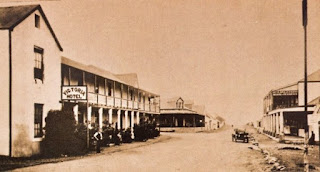But what it is chiefly remembered for is that every one of the seven women and thirteen children aboard survived the wreck owing to the gallantry and discipline of the men on board. The soldiers of the British Army regiments, and the sailors and marines under Captain Robert Salmond, jeopardised their own chances of survival by putting the 'women and children first' in a gesture immortalised by Rudyard Kipling as 'Birkenhead Drill'. (read the poem)
This disaster started the protocol of "women and children first!", which became a standard evacuation procedure in maritime disasters. Similarly, "Birkenhead Drill" carried out by the soldiers became the epitome of courageous behaviour in hopeless circumstances.
Shipwreck:
The story of the Birkenhead begins at the Port of Cork in Ireland in January 1852. There she embarked 479 soldiers from a variety of regiments who were bound for the Eastern Cape to reinforce the British troops fighting in the 8th Frontier War. A number of military and naval officers, more than fifty women and children and a crew of 125 brought the ship's complement to about 693. All these were crammed into an iron hull less than 64 metres long and a little more than eleven metres wide - about the width of a tennis court....
Read the full story
Birkenhead Horses
Various sources mention that between 9 and 30 horses boarded the Birkenhead at Simon’s Bay. The conclusion drawn by diligent researchers, however, is that there were no more than nine horses on board – belonging to military officers, Wright, Bond-Shelton, Seton, Dr. Laing and Booth. They concluded that the Birkenhead was too small to safely accommodate and convey more than this number of horses along with the bales of hay needed for the voyage. read full story











